17 Oct The Lost Temple of Angkor Wat, Cambodia
Every time I heard about Angkor Wat temple in Cambodia, I visualized dark mysterious temples taken over by trees and forests. But mostly it was Tom Raider and Lara Croft. Angelina Jolie brought quite a lot of popularity to the place and an air of mystery. Like the temples hold some deep secrets and remnants of great kings.
In fact, all of it is true. It really is like that. That’s because a great deal of history is buried down there. And while you will not be able to make sense of all of it, it will leave your flabbergasted. Here is everything you need to know about visiting the Angkor Wat temple, Cambodia.
What Is Angkor Wat?
The Angkor Wat temple in Cambodia is the largest Hindu temple in the world. The modern-day name of ‘Angkor Wat’ translates into ‘Temple City’ where ‘Angkor’ means ‘City’ and ‘Wat’ translates to ‘temple’. The rulers of the Khmer Empire build Angkor Wat in the first half of the 12th century.
However, the temples were lost after the Khmers fell to the Siam Empire. Surrounding jungles devoured the temples and remained as a part of the traveller’s tales for long. It was in 1860 that the French naturalist Henri Mouhot formally discovered the temple.
Its popularity grew manifolds thereafter and is also the central figure of Cambodia’s flag. It is also a UNESCO World Heritage Site.
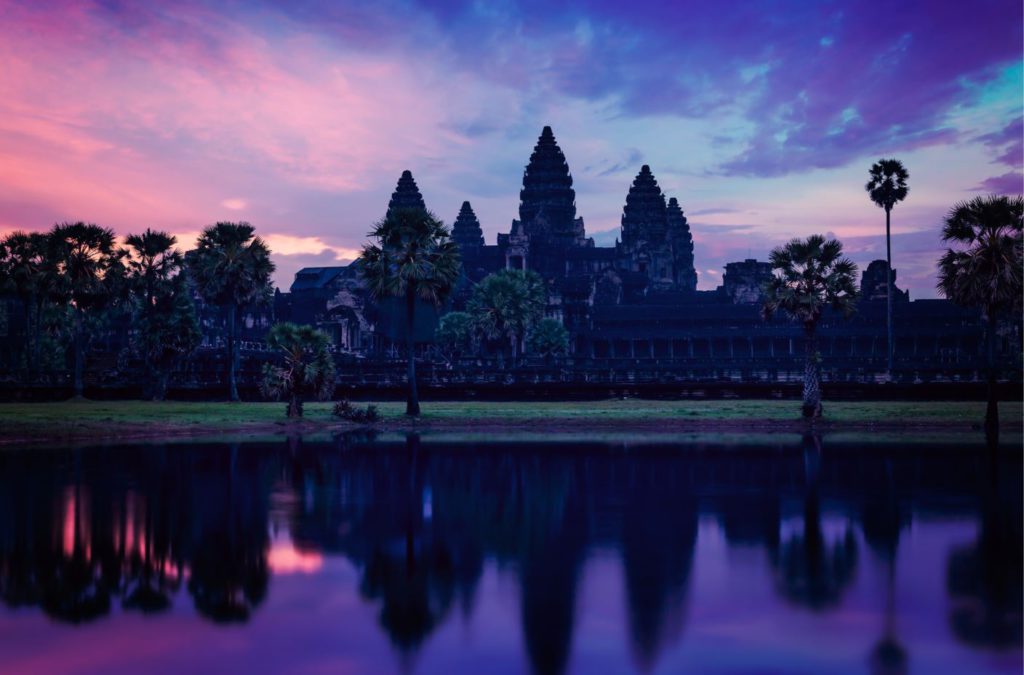
History Of Angkor Wat Temple, Cambodia
The Angkor Wat temple in Cambodia was built during the reign of the Khmer king Suryavarman II. The Khmer Empire was primarily Hindu then. Therefore, the temple was dedicated to the Hindu god ‘Vishnu’ where its initial name could have been ‘Varah Vishnu-lok’. It took around 30,000 builders and 30 years to finish Angkor Wat.
The sheer size of Angkor Wat is staggering, built over hundreds of acres and three floors. Shortly after the completion of the temple, the king died and was buried under the main chamber. Buddhism influenced the Khmer Empire during the 12th and 13th centuries. Parts of the temple were also converted into Buddhist shrines which still prevail.

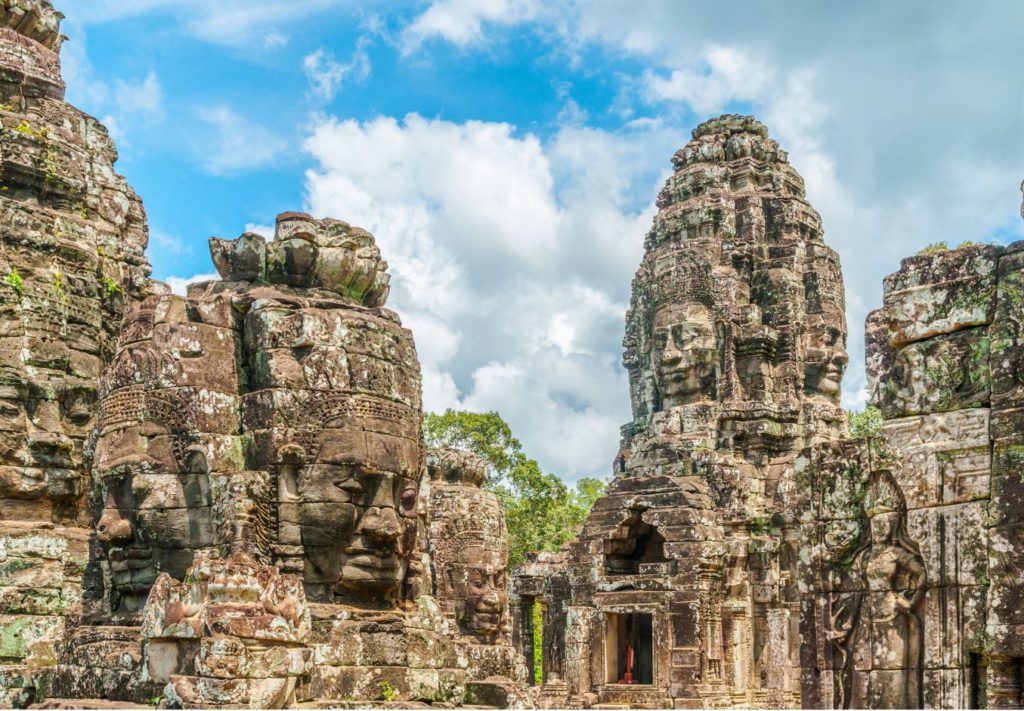
The Khmer City
It was not just a single temple. In fact, the whole area is a complex that is made of many other huge temples, of which Angkor Wat is the largest. A city, the size of current-day London resided around the temple and is believed to have complex social, economic and architectural excellence.
The city was probably one of the largest in the world at that point in time. The Khmer city was located just north of today’s Tonle Sap lake. The lake provided water and plenty of fish along with water supply for paddy fields to support the huge city.
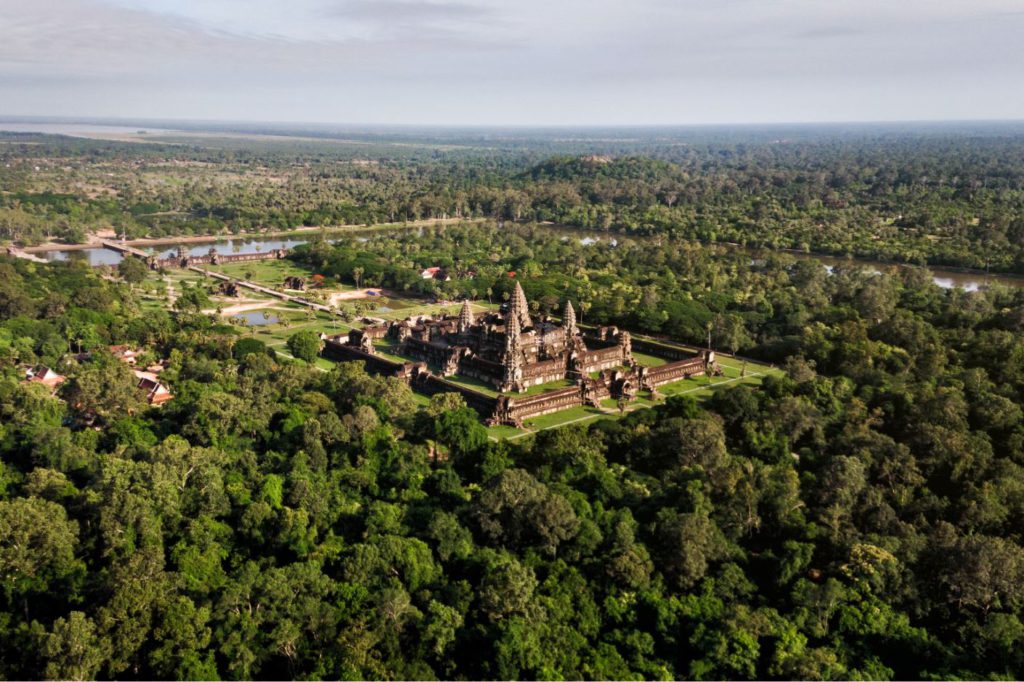
After the death of Suryavarman II, the Khmers were taken over by Chams (in current day Vietnam). They established Jayavarman VII as their ruler. Jayavarman built the state temple of Angkor Thom and Bayon just a few kilometres north in a similar style.
Siamese completely plundered and devastated the city shortly after the invasion. Much of it was lost and is probably still undiscovered. After its discovery in the 19th century, arduous work on its restoration is going on ever since.
Where Is Angkor Wat Located?
The Angkor Wat temple is located around 5.5 km to the north of the city of Siem Reap in Cambodia. This region forms the centre of the country of Cambodia, whereas Siem Reap was also the capital of the Khmer Empire. The temple is located inside a huge complex with a ticketed entry. The complex also contains many other temples like Angkor Thom and Bayon.
Planning to visit? Check out our guide on the best things to do in Siem Reap, Cambodia
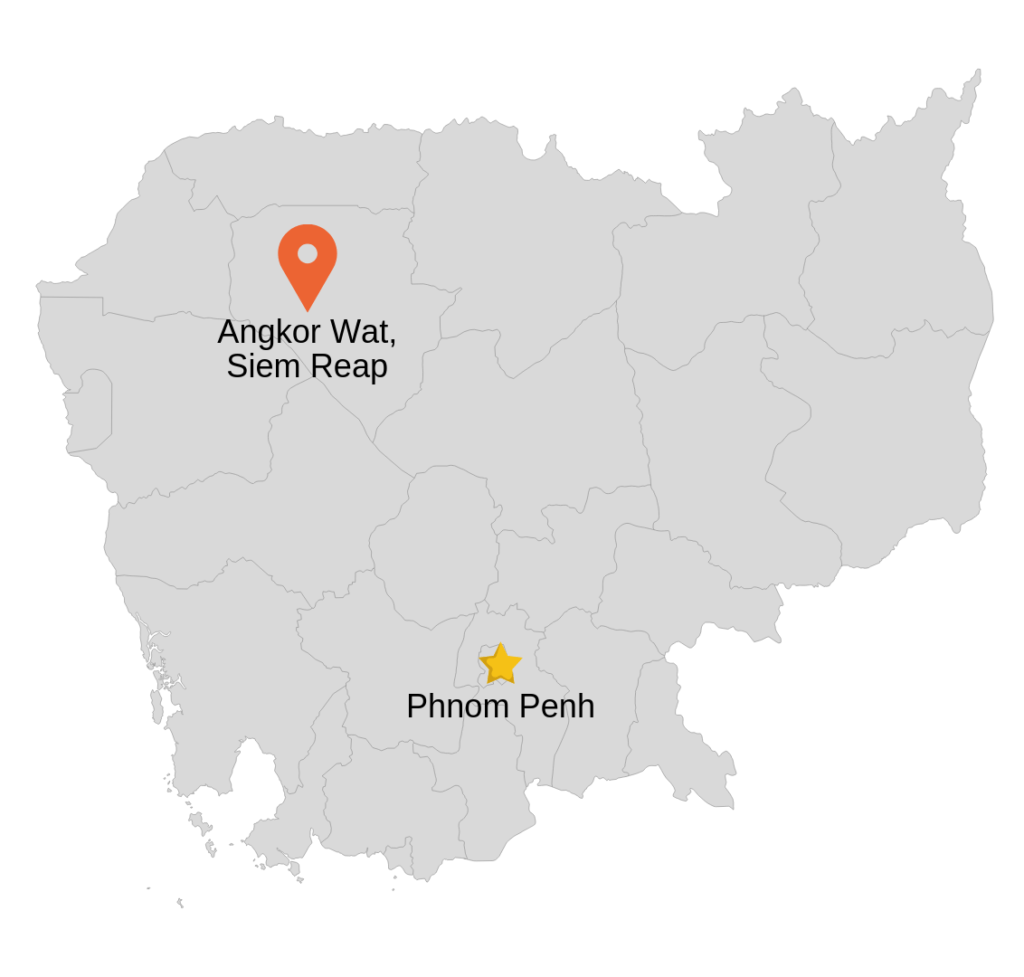
How To Reach Angkor Wat Temple, Cambodia?
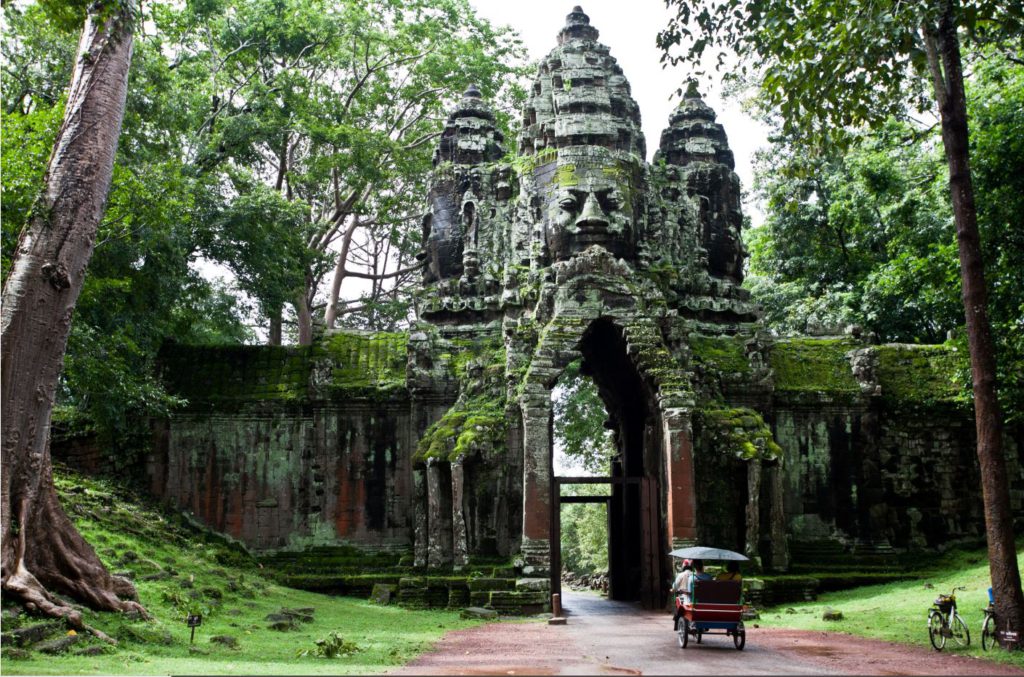
To reach Angkor Wat temple in Cambodia, you need to reach Siam Reap first. You can take up a hotel in the city of Siam Reap and travel to Angkor Wat on one of the many modes of transportation. Additional to it, you will need transportation to around the complex.
You can either decide to tour the complex on your own or take a guided tour. You cannot cover the temples on foot (at all). Here are a few options:
1. Take a Motorbike
If you know how to drive a two-wheeler and are on a budget, you can definitely look at taking a two-wheeler. It’s cheap, it’s convenient and it’s fun. There are a lot of bike shops in the city. You can also opt to take an e-scooter to be more eco-friendly.
A day’s rent will cost you somewhere between $15-20. They may keep your passport for the day though. They provide helmets and sometimes you won’t even need a driving license.
2. Take a Bicycle
This one is also a popular option. However, keep in mind that the temple complex is quite large and Cambodia is an extremely hot and humid country. Prepare yourself to cycle around 30 km inside the complex and more on the way there.
This might be a good option if you are taking a multi-day pass. You can find a bicycle at one of the numerous roadside vendors in Siam Reap. A bicycle will cost you between $2-8 a day. Do yourself a favour and take a geared one.
3. Take a Tuk-Tuk
Exploring Angkor on Tuk-Tuk can be a unique experience. If you are looking for something more comfortable, but still a little local in style, take a tuk-tuk. Cambodian tuk-tuk consists of covered and comfortable seats for 2 on the backside. A driver on a moped pulls the cart.
A full-day ride on a tuk-tuk to the whole complex will cost you between $15-21 with an additional $3 for sunrise. It is also a great way to contribute to the local economy. You can talk to any of the numerous tuk-tuk drivers on the roadside or ask for one at your hotel.
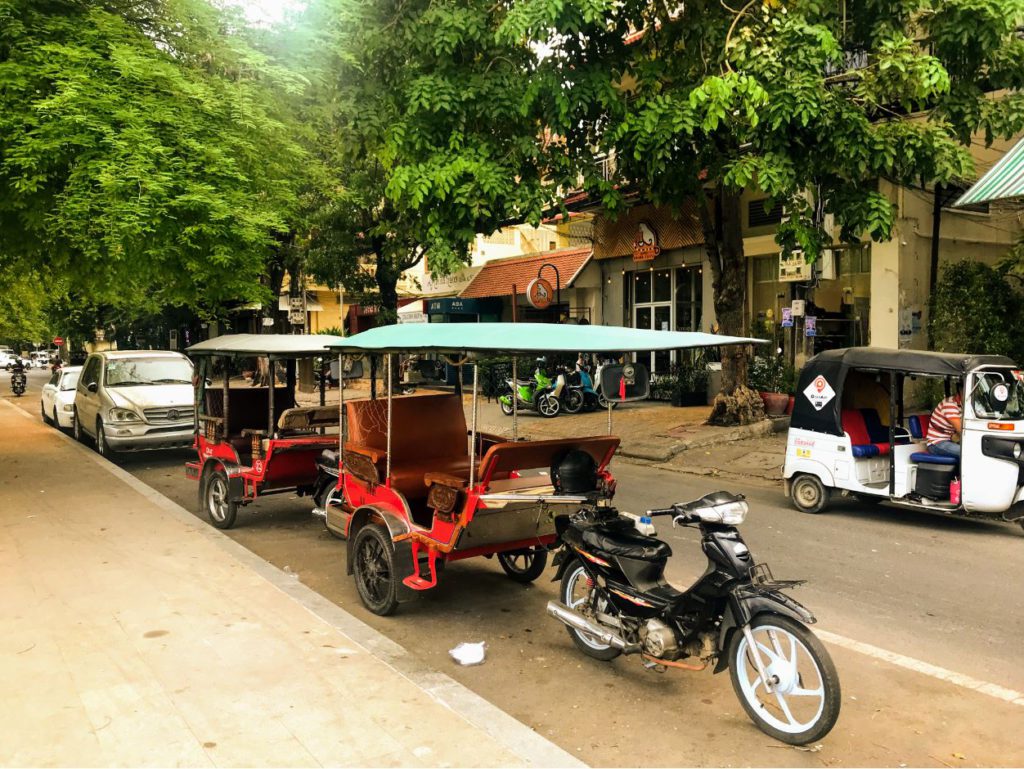
4. Take a Guided Tour
For bigger groups, a guided tour is probably the best option. You will get an air-conditioned bus or van with regular stops for food and drinks. It is comfortable, convenient, somewhat luxurious and also quite affordable with the expenses shared. A day’s trip will cost you between $20-30 per person.
Angkor Wat Full-Day Sunrise Tour
The above estimates do not include the tickets to Angkor Wat.
When To Visit Angkor Wat Temple, Cambodia?
The best time to visit Cambodia and Angkor Wat is during the dry period between November to February. The climate is dry and comparatively cooler than the summer months. This is also the tourist season, so expect quite some rush.
The next best time is during the wet season between May to October. The time between June to September receives the most amount of rainfall. The rain subdues the heat a little but it is still extremely humid.
The best possible time of the day to visit Angkor Wat is during the sunrise. It is a thing! Every local will suggest this. Since Angkor Wat faces the west, the sun rises directly behind main the main temple.
There is a point when the temple will appear pitch black against the background of a beautiful pink sky. But don’t think that you will be the only person there. You will find it crowded, even during the offseason.
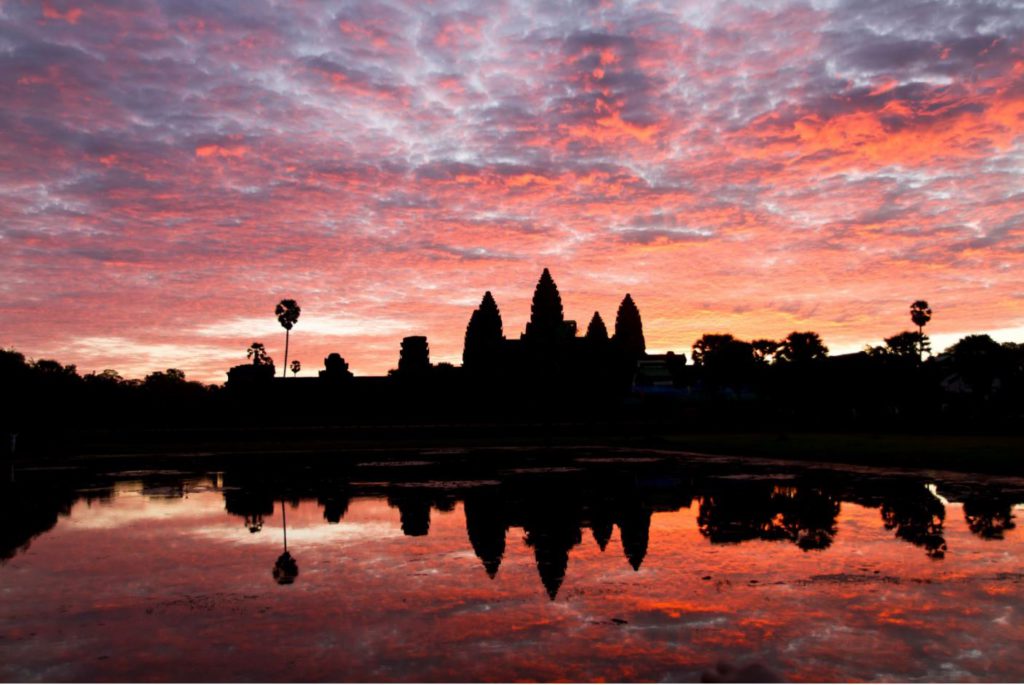
The complex opens from 5 am in the morning to 6 pm. However, some temples open much later. Check at the counter for more details. The complex is open on all days of the year. The entrance to the complex is free after 5.00 pm – 6.00 pm for sunset and nobody checks the tickets. So you get a free hour there.
Tickets To Angkor Wat
There are three types of passes that you can buy to visit Angkor Wat depending upon the time you need to explore the place.
1 Day Pass cost: $37
3 Day Pass cost: $62
7 Day Pass cost: $72
There are no other ticket types. As to how many days you will need to explore the ruins? That will totally depend upon you. If you are scarce on time, take a 1-day pass. But expect it to be exhausting. If you want to explore Angkor Wat in detail and in a more relaxed manner, go for a 3-day pass.
For tourists, 3 days is plenty of time to explore. Therefore I won’t recommend a long pass. However, if you are studying Angkor Wat for culture, hobby or research purpose, a 7-day pass will make a good deal for you. They accept both cash and cards (USD is widely accepted in Cambodia). ATM machines are just outside the ticket counter.
3 Day Angkor Exploration Private Tour by Tuk-Tuk
The tickets are bought on the ticket counter which is outside the main temple complex. It is a huge white building on the right-hand side of the entrance road. If confused, check Google Maps for ‘Angkor Wat ticket counters’ or just follow the crowd.
Visiting Angkor Wat
The first thing you need to do before you step into the area is to understand how big Angkor Wat temple complex. Also, you will need a rough map of all the temples and landmarks in it. The most important temple is Angkor Wat of course. Next on the must-visit list should be Angkor Thom and Bayon along with Ta Prohm (the one with huge tree trunks).
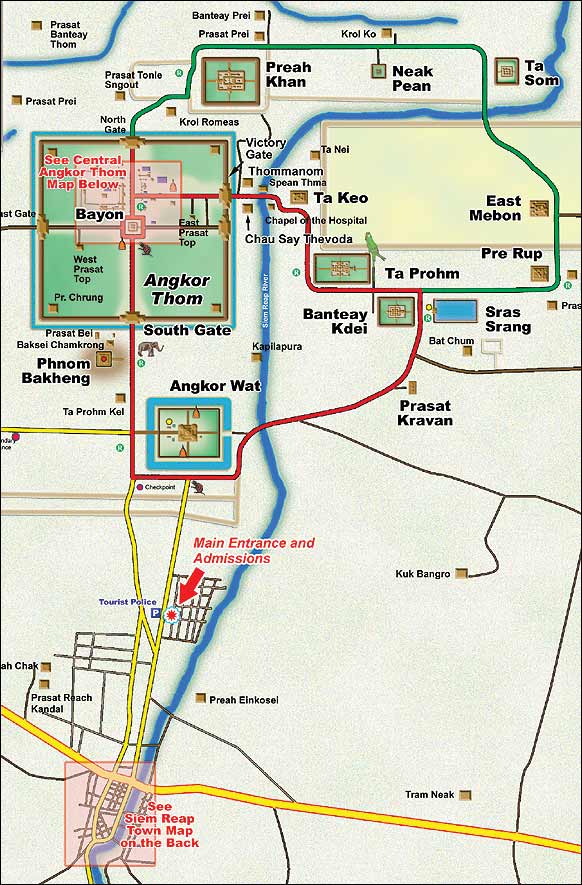
The routes on which the temples are visited is called the Big circuit and the Small Circuit. The red line represents the route called the small circuit. The one in the Green and the Red one combined is the big circuit. This is something a tuk-tuk driver may ask or suggest to you.
Don’t be fooled out of ignorance. Say, if you want to see the whole complex, some tour guide only takes you around the small circuit. Make sure you understand the package completely.
Angkor Wat
Apart from the architectural grandeur, the first thing which will leave you awestruck is the sheer size of the temple. It is huge! And it is 3 stories tall and the largest temple in the world! That too was built in the 12th century.
Sharp L-shaped lakes surround the temple on all sides. It forms a perfect square from the top (aerial view). The details of the lake are so crisp and clean that you wonder how they accomplished the feat.
I personally will suggest hiring a tour guide, even if it is for a while. I feel that photos won’t matter much if you don’t get to know the history and significance of the place. A 2-hour tour guide will cost you $10 who loiter around at the entrance of the temple. For me, it was totally worth it.
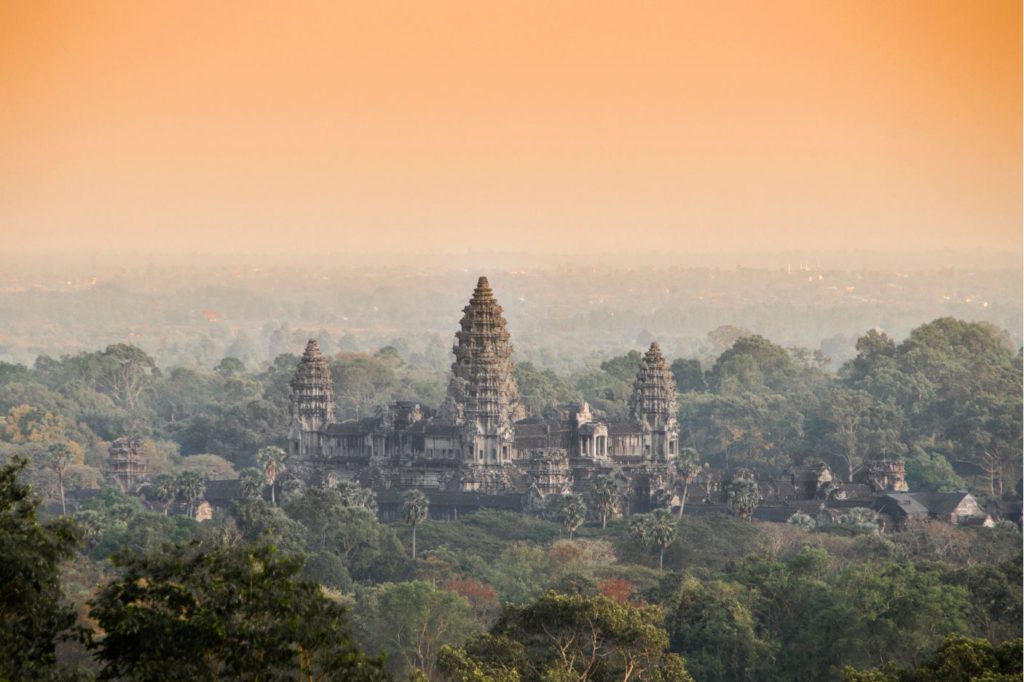
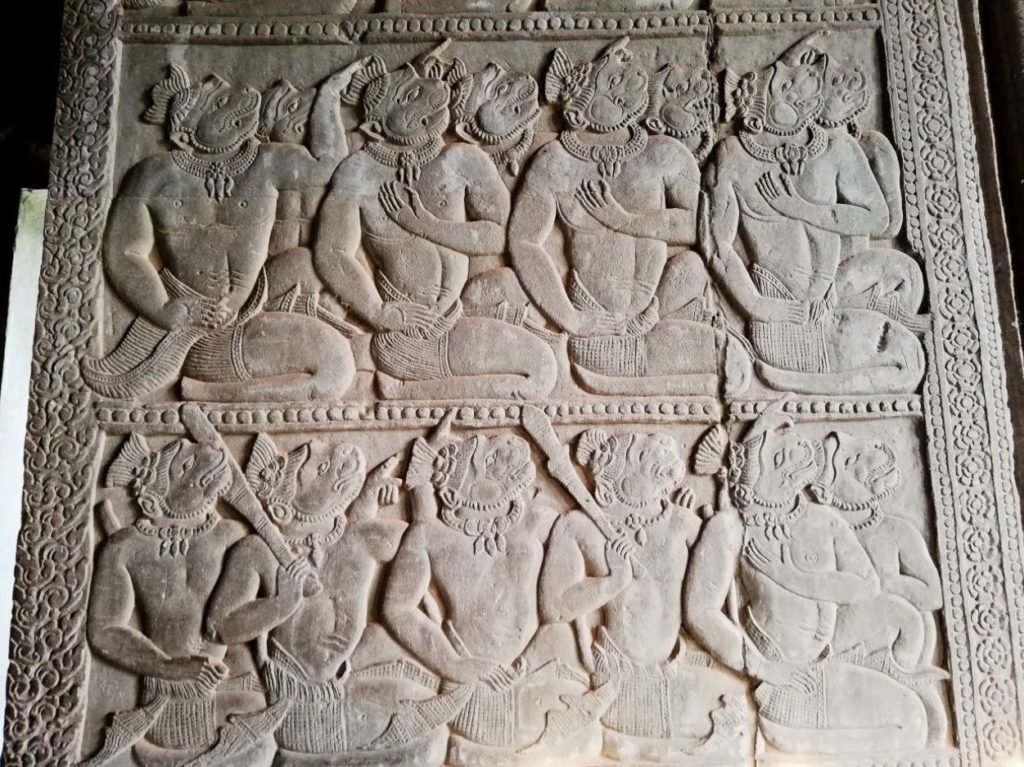
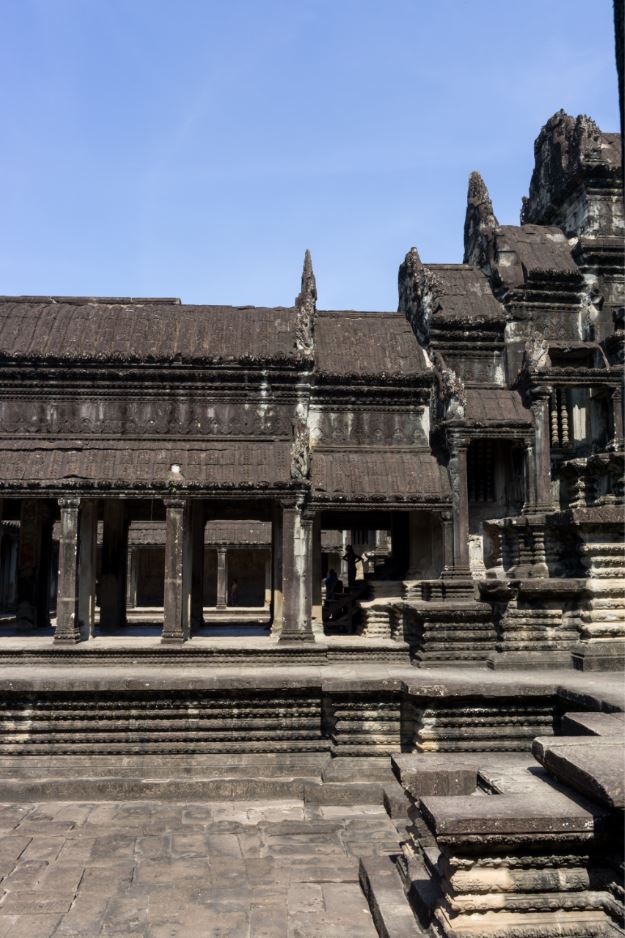
Angkor Wat’s main structure’s design is inspired by Mount Meru which was believed to be the home to all the Hindu gods and goddesses. The main temple is divided into four wings – East, West, North, and South. Each wing tells a tale from one of the Hindu mythology scriptures like Ramayana, Mahabharata and other tales like Samudra Manthan.
The visual figurines talk about the daily life of king Suryavarman along with the narratives of his battles. You will also find a number of shiv lings or idols of deities at junctures of wings or corridors.
Many of them converted into Buddhist prayer areas. It is common to see Buddhist Monks inside the temple and you may find them carrying out religious ceremonies.
Angkor Thom and Bayon
The name ‘Angkor Thom’ literally translates into ‘Big City’ where Angkor mean ‘Big’ and Thom means ‘City’. It really is quite huge and the whole complex is more than four times the size of Angkor Wat.
Gigantic seven or five-headed serpents greet you at the gateway, known as Shesha Naga in Hindu mythology. It forms the bed on which the Hindu god Vishnu lies to whom the temple is dedicated to.

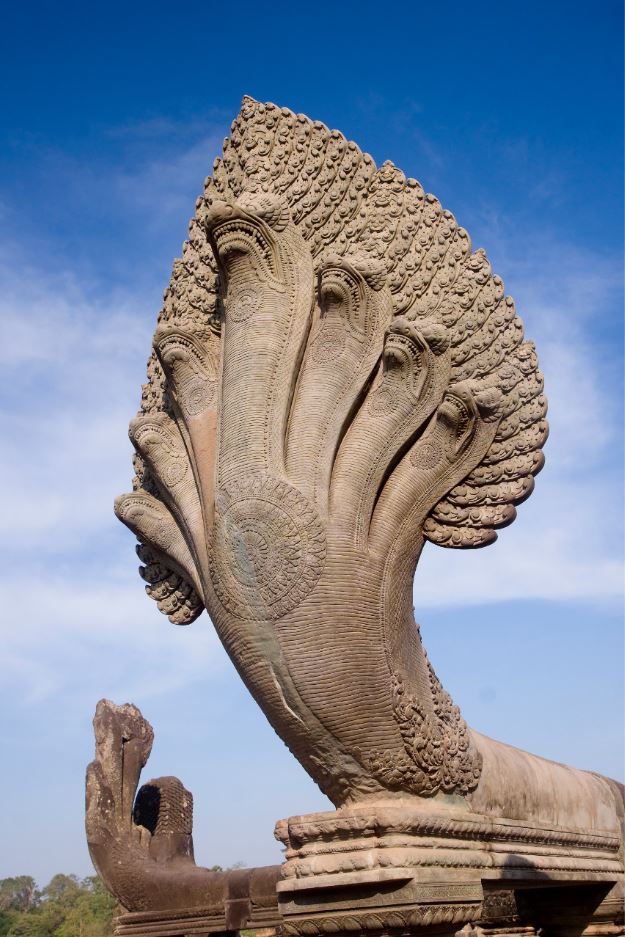
The centre of the area is where the main temple is located, now known as Bayon. Angkor Thom was built under the reign of Jayavarman VII, who was inclined towards Buddhism. With Buddhism in mind, Bayon was built with several humungous faces of Buddha.
These have also become the face of Bayon as well as sometimes, Angkor Wat. Some historians believe that the Khmer empire was divided into 54 territories. Therefore 54 faces were built facing each direction signifying the eyes of the king over the country. Bayon is way smaller than Angkor Wat in size but it can still take a considerable amount of time to visit the whole place.
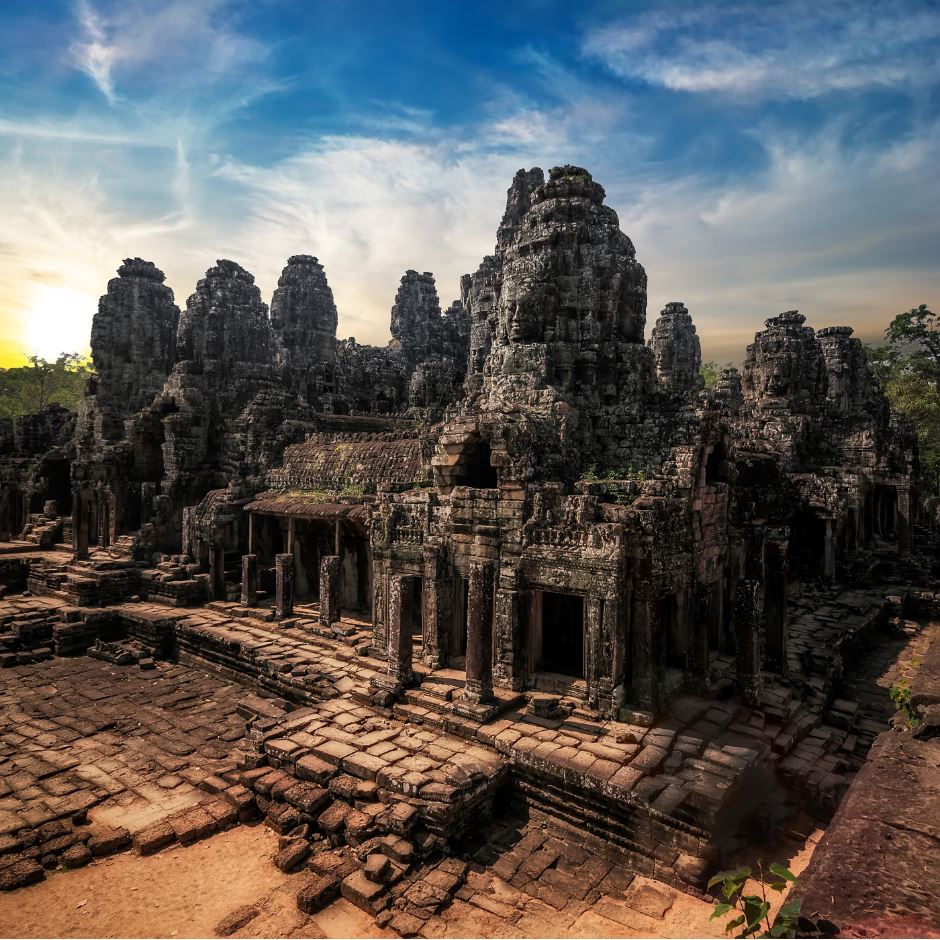
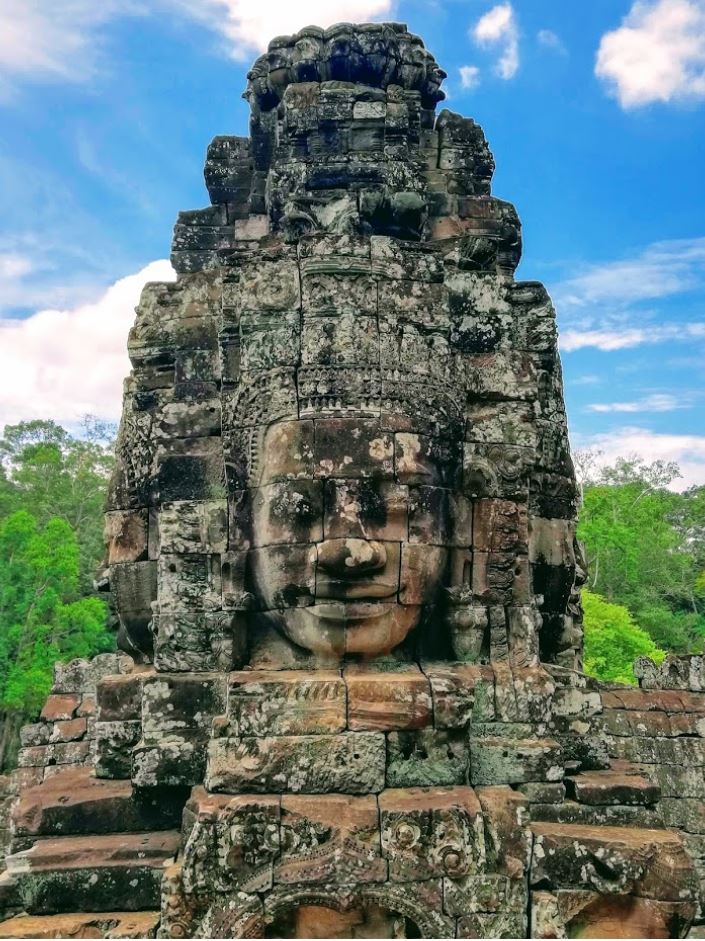
Other Temples
There are around 8-9 more major temples in the complex. Varying in shapes, sizes and architectural styles. But it will depend upon your interest in ruins and mythology and how much time you want to spend exploring them. Some are still completely intact, while others have succumbed to nature and time.
Some of them are open structures with prayer areas while others resemble Angkor Wat in many ways. The other part I loved about the complex is the ride from one temple to another. The cool breeze and dense forests on both sides may make you look forward to it more than you want.
Another important place is Ta Prohm which is relatively close to the Angkor Wat temple complex. The small circuit also covers this, in case you don’t want to visit all the temples. The site looks extremely haunted for once. The most astonishing part is the gigantic trees that have sprouted from the crevices of the temple and have become one with it.
The dangerously strong roots have damaged the temple beyond repair. However, it makes a distinctive sight which is nothing you can witness anywhere else, I promise. Most of the scenes from Tomb Raider were shot here.
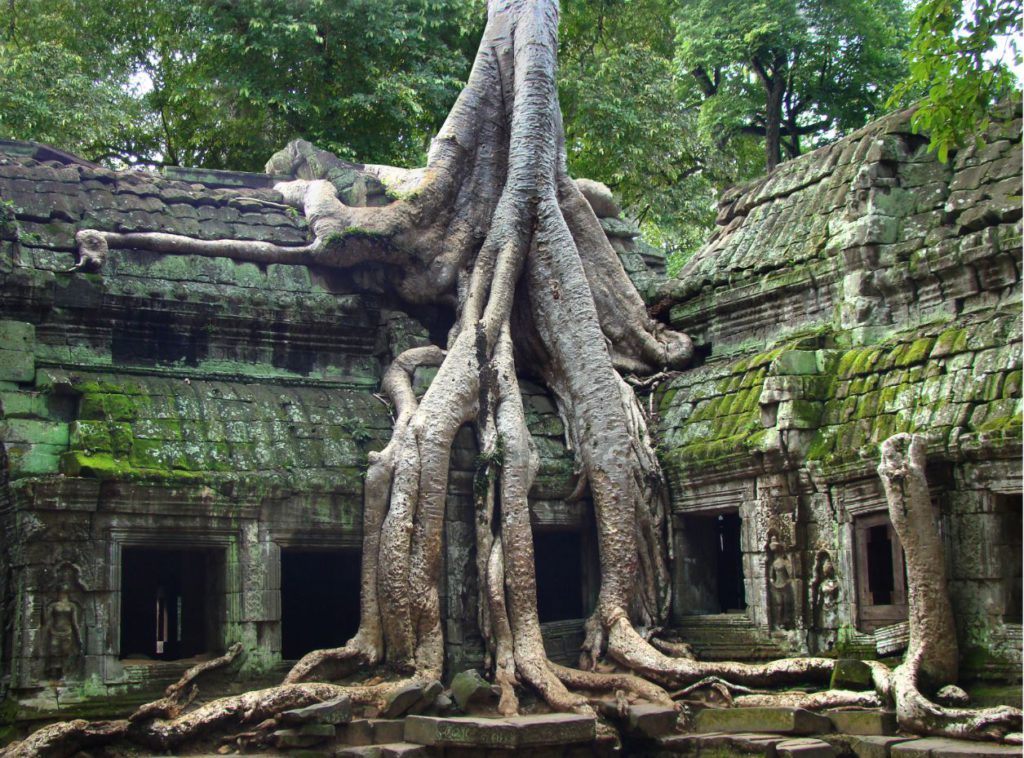
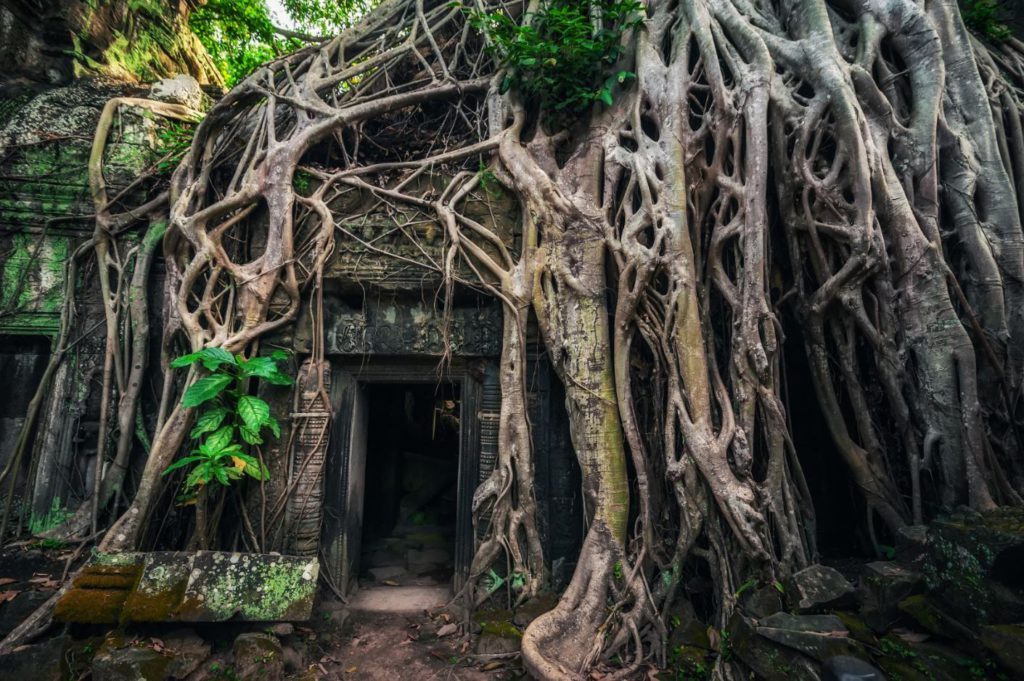
Tips About Visiting Angkor Wat Temple Cambodia
What to Wear
There isn’t a strict dress code on what to wear, unlike other Buddhist temples in South East Asia. Although, since Angkor Wat is still a temple, holy to the local people cover yourself appropriately. Wear loose and comfortable clothes since humidity will be at its peak, no matter when you go.
I will recommend knee-length shorts, skirts or dresses along with light knit t-shirts. Cover your shoulders, apart from the culture, to avoid sunburn. Do not wear heels or even wedges. The terrain will be rough and I will recommend only wearing sneakers, sports shoes or sandals here. Also, carry a hat and sunglasses to protect yourself from the scorching heat.
In Southeast Asia? Here is our complete checklist on what to pack to Southeast Asia
Respect the temple
Do not go climbing on the Bayon faces or posing inappropriately around the temple. Trust me, you will see a lot of them doing so. But it’s not cool and the locals do not appreciate it. It is a holy site for millions of people and getting a sexy Instagram photo with out-of-context behaviour will not be largely appreciated.
Respect the Monks
You will find many monks in the area. Be extremely respectful to them. Do not touch them, especially females since it will break their holy vows. If you want to take a picture of them, ask them first and politely. Don’t try to get too over-friendly suddenly.
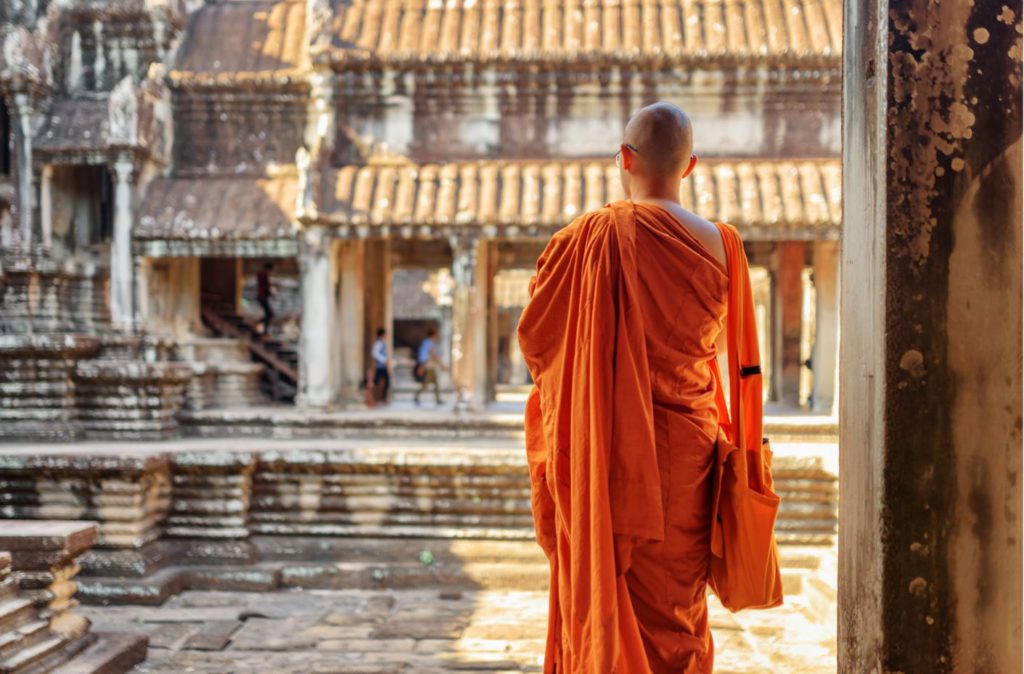
Take something to eat
Even though there are a few eateries inside the complex, take snacks and water along with you. It may take to explore one of these places and eateries are far from each other. Apart from that, take your trash home. Even if you cannot find a dustbin in the vicinity, take your trash home.
Take nothing which is free
Scams are common in Cambodia. Sometimes it’s your luggage, other times it’s just a dollar. But don’t let anyone take your passport or your mobile phone or it can be used against you. Even if someone offers you to give an interesting tip about a place, change notes for you or take a photograph, they will probably ask for money for the exchange.
Don’t ride an elephant
For the sake of the animals, don’t. The elephants are not treated well and are often abused. Don’t support the people running it, even if others do.
Save on Pinterest






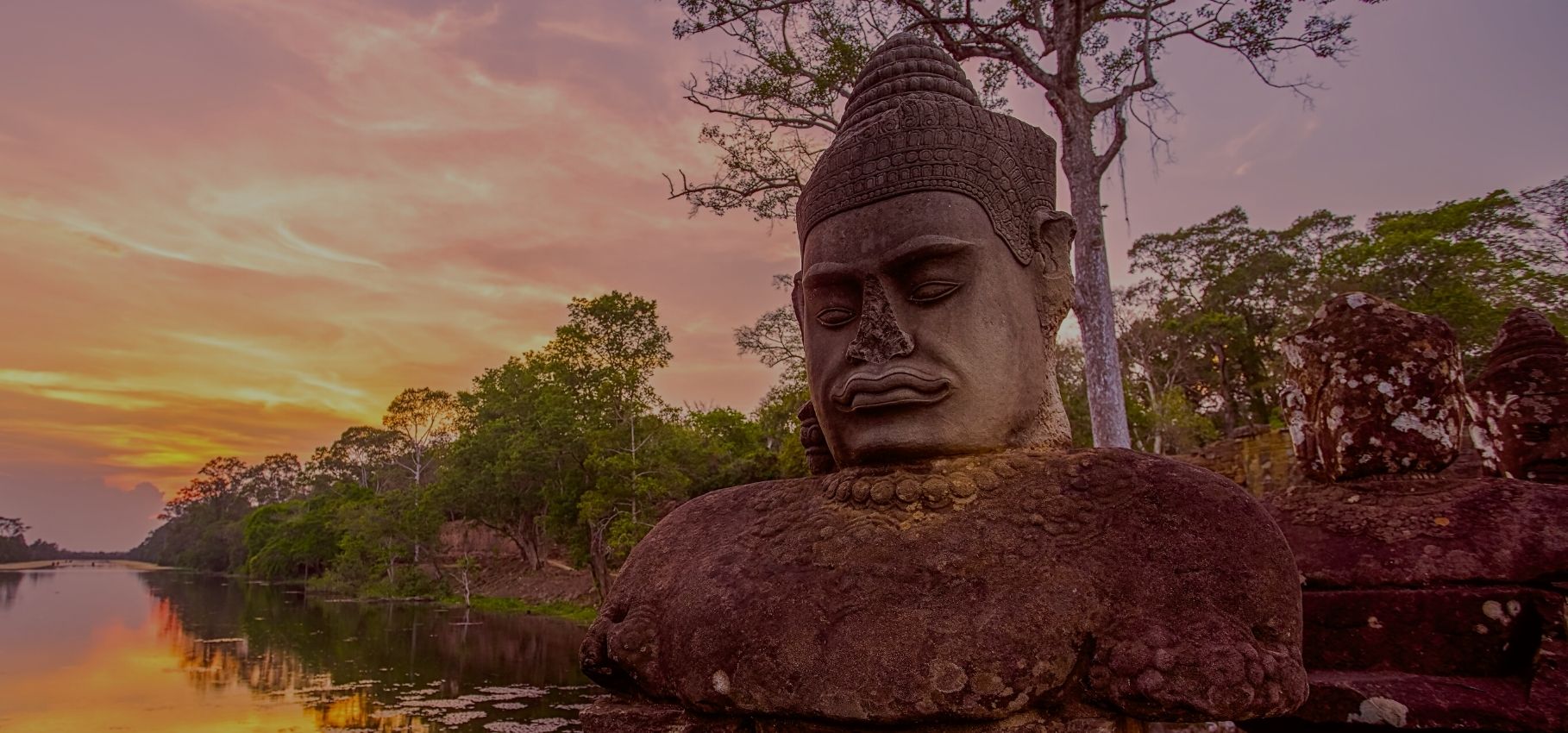
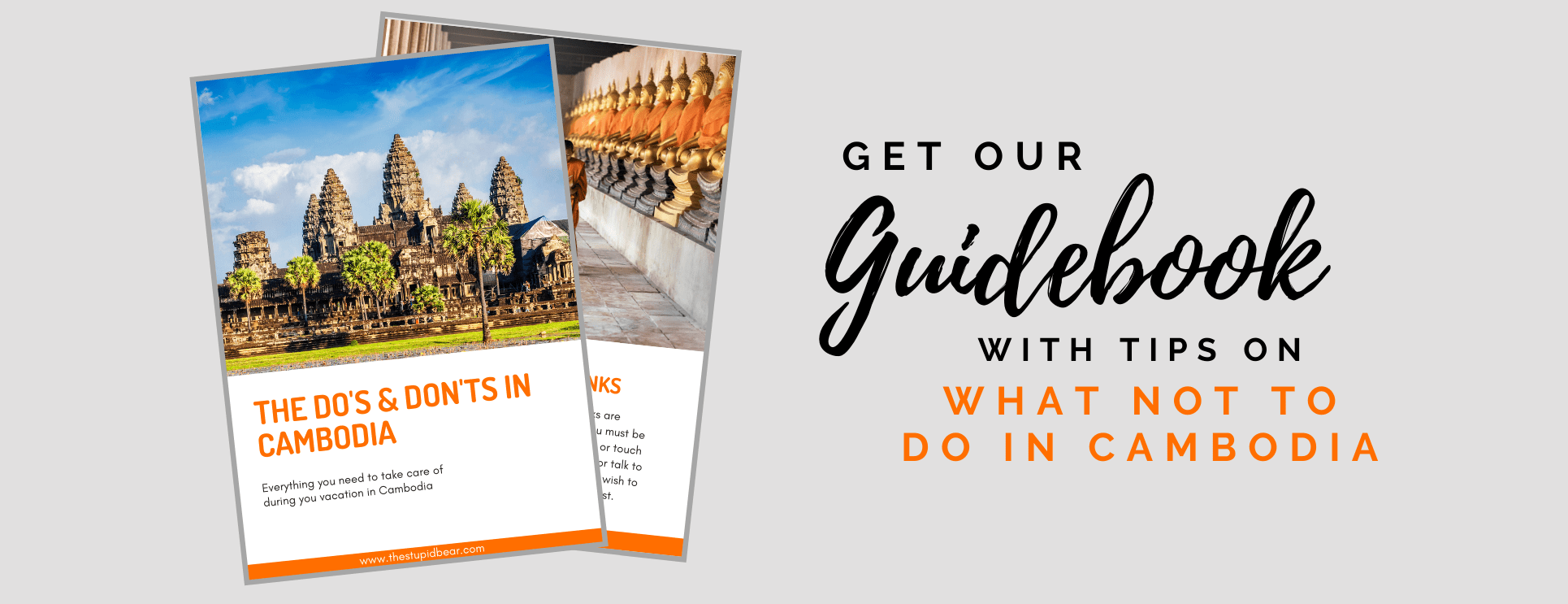

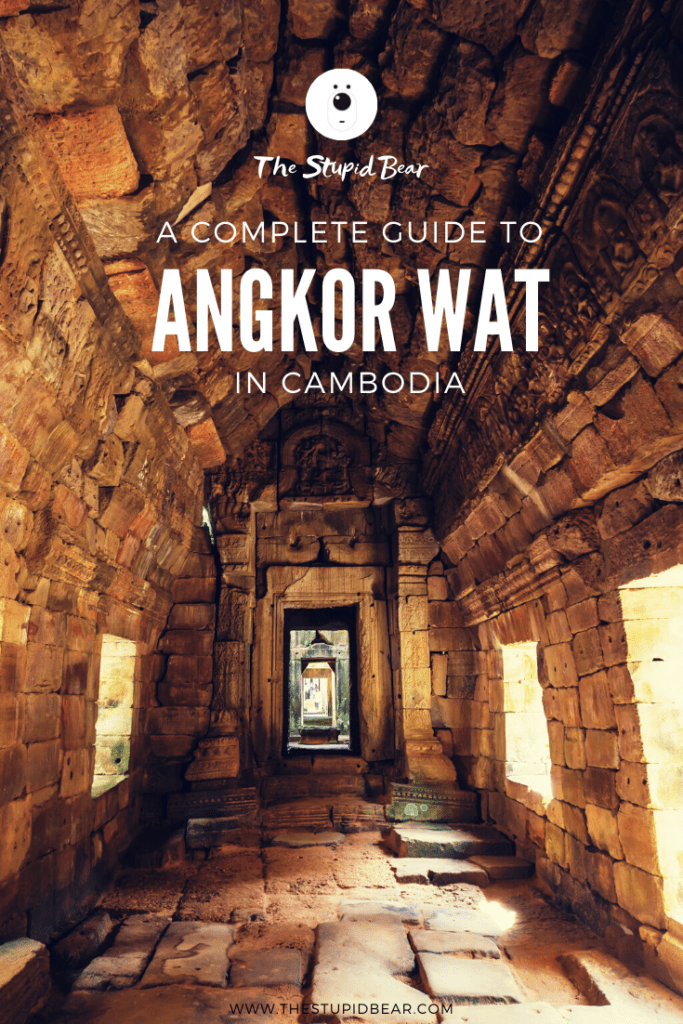
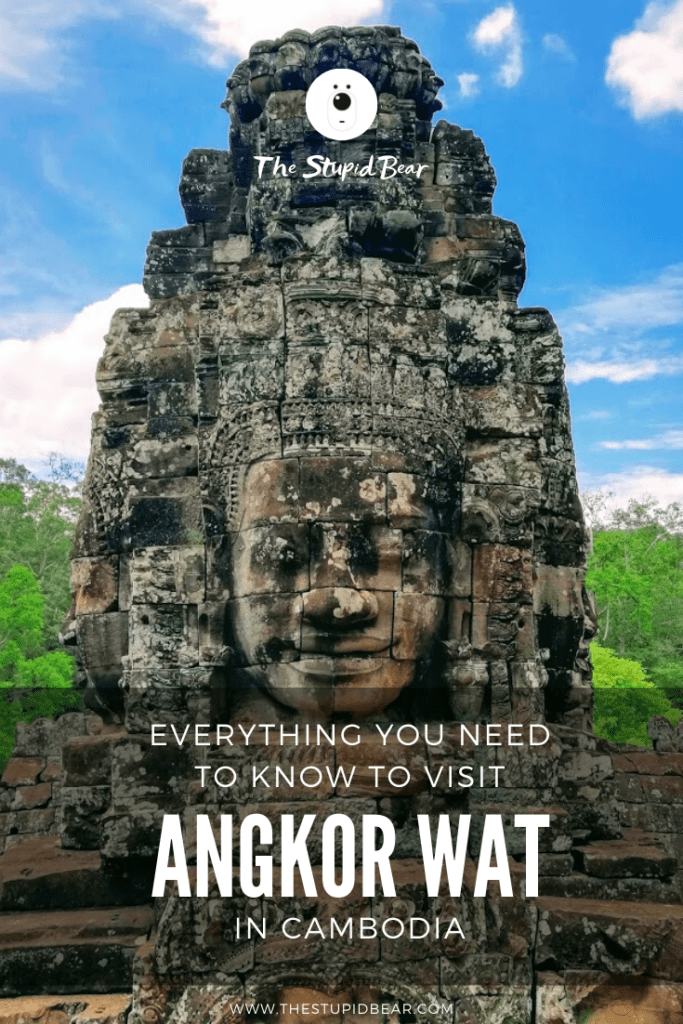
Sam Montana
Posted at 23:33h, 02 NovemberAn excellent and in-depth article about visiting Angkor Wat. I have read a lot about Cambodia and always wanted to visit Angkor Wat. Until I am able to, this article gave me a feeling I was there.